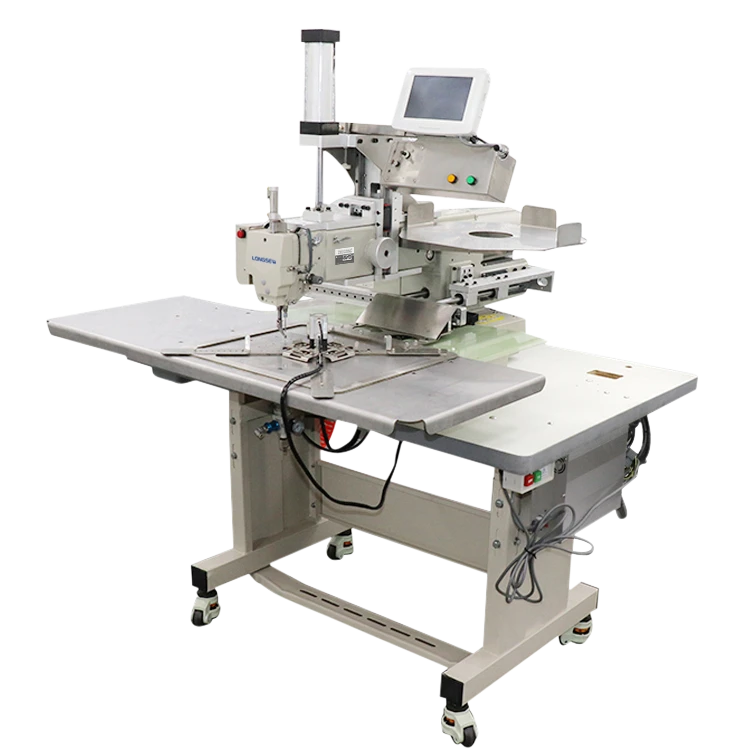saddle making sewing machine
The Art of Saddle Making A Look into Sewing Machines
Saddle making is an intricate craft that combines artistry with functionality, resulting in beautiful and durable products that can withstand the rigors of equestrian life. In this age of technology, the role of sewing machines in saddle making has become increasingly significant, offering artisans the tools they need to produce high-quality saddles efficiently and effectively.
Sewing machines designed specifically for saddle making are built to handle the unique challenges posed by the materials used in crafting saddles. Leather, for instance, is a heavy and durable material that requires powerful machines equipped with specialized needles and threads to ensure that the final product is not only aesthetically pleasing but also sturdy enough to endure harsh conditions. The sewing machine acts as an extension of the craftsman’s hand, allowing for precision stitching that is crucial in the saddle-making process.
Types of Sewing Machines for Saddle Making
There are various types of sewing machines suitable for saddle making, each with its own set of features tailored to the requirements of the trade. Walking foot sewing machines are particularly popular among saddle makers, as they provide superior control while stitching through multiple layers of thick leather. The walking foot mechanism ensures that all layers move evenly through the machine, preventing slippage and ensuring a neat finished seam.
Another commonly used machine is the heavy-duty industrial sewing machine, which is designed for dealing with tough materials. These machines are capable of sewing through thick leather, synthetic fabrics, and other durable materials, making them ideal for saddle construction. Many industrial machines also come with powerful motors that allow for high-speed sewing, essential for increasing productivity without compromising on quality.
The Importance of Choosing the Right Thread
Alongside selecting the right sewing machine, choosing the appropriate thread is equally crucial in saddle making. The thread must be strong and durable to withstand the stress that saddles encounter during use. Typically, nylon or polyester threads are favored for their strength and resistance to abrasion. Additionally, thread weight and size can affect the overall look of the saddle. A thicker thread might be used for decorative stitching, giving the saddle a more rugged appearance, while finer threads may be used for intricate details and delicate patterns.
saddle making sewing machine

The Crafting Process
The actual process of saddle making involves multiple steps, with sewing being just one of them. Initially, artisans design the saddle and prepare the leather by cutting it into the required shapes. After that, various components such as the tree, skirts, and rigging are assembled. The sewing machine comes into play when these parts need to be securely stitched together. Craftsmen often rely on their knowledge and experience to ensure that each stitch is perfectly placed and that the saddle’s structure is sound.
The Future of Saddle Making
As technology continues to evolve, the saddle-making industry benefits from advancements in sewing machine design. Modern machines are now equipped with computerized features, allowing for greater precision and customization. Artisans can program intricate patterns and designs, improving the aesthetic elements of saddles while maintaining the necessary strength and functionality.
Furthermore, sustainability is becoming a significant focus in the manufacturing realm. With many saddle makers exploring eco-friendly materials and processes, sewing machines are also being adapted to support these movements. By incorporating sustainable practices into their work, artisans not only honor traditional methods but also contribute to a more environmentally conscious future.
Conclusion
Saddle making is a time-honored craft that has evolved with the integration of sewing machines. These machines, specifically designed for heavy-duty use, empower artisans to produce quality saddles that blend functionality with aesthetic appeal. As the industry continues to adapt and innovate, the relationship between craftsmanship and technology will undoubtedly shape the future of saddle making, ensuring that this beautiful art form endures for generations to come.
-
Leather Sewing Machine: The Industrial Standard for Tough MaterialsNewsJul.18,2025
-
Sail Making Machine: Heavy-Duty Stitching for Industrial and Marine NeedsNewsJul.18,2025
-
Sling Sewing Machine: The Backbone of Heavy-Duty FabricationNewsJul.18,2025
-
Leather Sewing Machine: Precision for Heavy-Duty StitchingNewsJul.18,2025
-
Big Bag Sewing Machine: Powering the Future of Bulk PackagingNewsJul.18,2025
-
FIBC Sewing Machine: Essential Equipment for Bulk Bag ProductionNewsJul.18,2025
-
Heavy Duty Leather Sewing Machine: A Must-Have for Professional LeatherworkNewsMay.28,2025





























